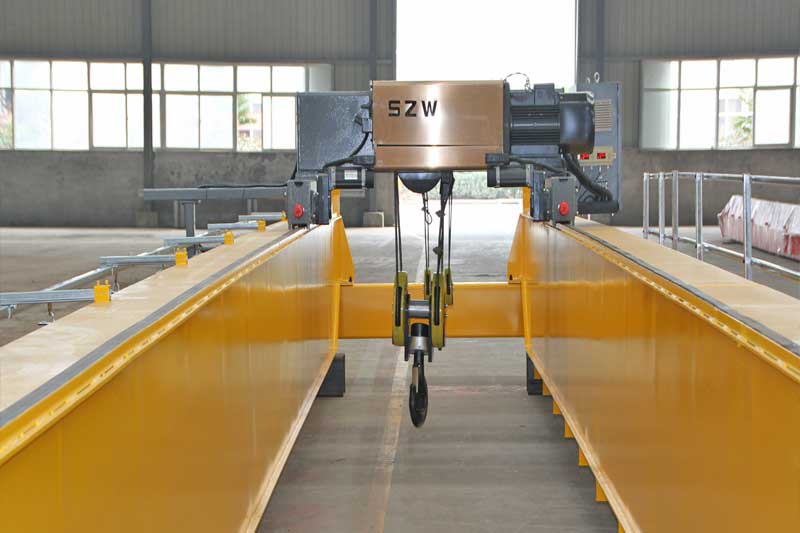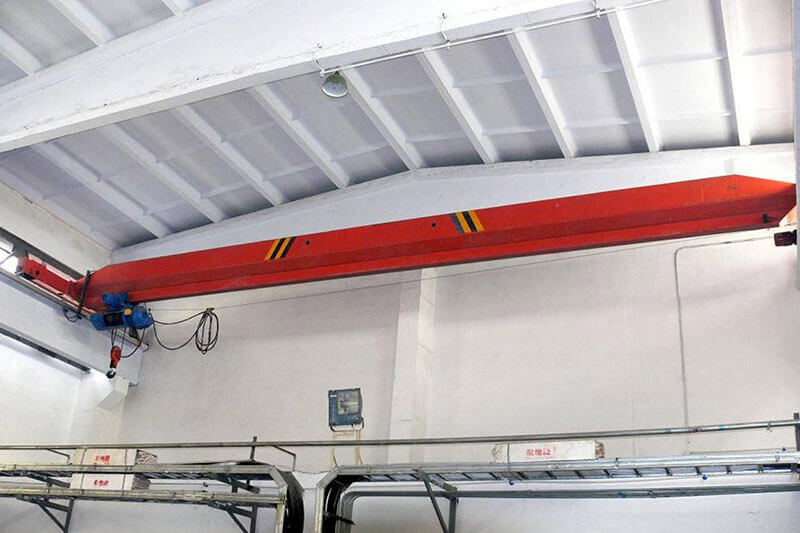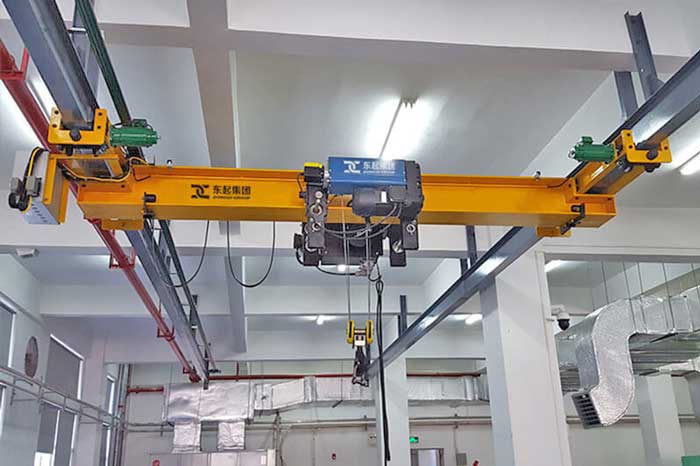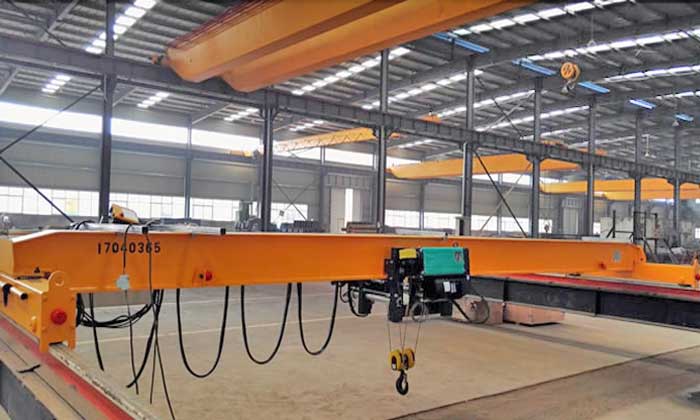Overhead Crane Systems: A Detailed Guide for Informed Purchasing
Overhead Crane Systems: A Detailed Guide for Informed Purchasing" offers insights on types, benefits, and key considerations for effective buying.
Overview of Overhead Crane Systems
Overhead crane systems are essential tools used in various industrial settings to lift, move, and position heavy loads. These systems consist of several components, including a bridge, trolley, and hoist, all designed to work together to transport materials efficiently across a workspace. By utilizing overhead space, these cranes help to free up valuable floor space, making them ideal for warehouses, manufacturing plants, and construction sites. Their ability to handle large and heavy items not only enhances operational efficiency but also improves workflow, allowing businesses to process tasks faster and with greater safety.
Making informed purchasing decisions is crucial when selecting an overhead crane system. Buyers need to understand the specific requirements of their operations, such as load capacity, lifting height, and space constraints. A well-considered purchase can lead to significant long-term savings by minimizing maintenance costs and downtime. Additionally, selecting the right crane can enhance operational safety, reducing the risk of accidents and injuries. This careful approach to purchasing ensures that the crane will meet the demands of the job and provide reliable service for years to come.
Basics of Overhead Crane Systems
Overhead crane systems are designed to lift and transport heavy loads within a defined area, making them indispensable in many industries, including manufacturing, construction, and logistics. These cranes operate by utilizing a bridge that spans the workspace, allowing the load to be moved horizontally. The hoist, which is attached to a trolley, can raise and lower materials with precision. This setup enables efficient handling of heavy items, improving productivity and reducing manual labor. Common applications include moving raw materials in manufacturing plants, positioning equipment on construction sites, and transporting goods in warehouses.
Key Components
The key components of an overhead crane system is essential for evaluating its functionality and suitability for specific tasks:
- Bridge: The bridge is the main structural element that spans the workspace. It supports the trolley and hoist and is typically mounted on top of the runway beams. This design allows for smooth horizontal movement across the area.
- Trolley: The trolley is a movable unit that travels along the bridge. It carries the hoist and is responsible for moving the load from one side of the workspace to the other. Trolleys can be manually operated or motorized, depending on the system's design.
- Hoist: The hoist is the mechanism that lifts and lowers the load. Various types of hoists are available, including electric, manual, and pneumatic options. The choice of hoist depends on the specific lifting requirements and the load being handled.
- End Trucks: End trucks are the components that connect the bridge to the runway beams. They allow the bridge to move along the rails, enabling smooth operation throughout the workspace. End trucks can be equipped with wheels or rollers for easy movement.
Types of Overhead Cranes Systems
Different types of overhead cranes are designed to meet varying load requirements and operational needs:Single Girder Overhead Crane System: These cranes feature a single horizontal beam (girder) that supports the hoist and trolley. They are ideal for lighter loads and are often more cost-effective and space-efficient, making them suitable for smaller operations or facilities with limited headroom.- Double Girder Overhead Crane System: Double girder cranes consist of two parallel beams that provide greater stability and load capacity. They are designed for heavier loads and offer increased lifting heights, making them suitable for large manufacturing facilities and heavy-duty applications.
- Top Running vs. Underhung Crane System: Top running cranes are mounted on top of the runway rails, which allows for greater lifting heights and is generally more suited for heavier loads. In contrast, underhung cranes are suspended from the ceiling, making them a better choice for facilities with limited headroom. The differences between these configurations helps buyers choose the right crane for their specific space and load requirements
Single Girder Overhead Crane System
Single girder overhead cranes feature a single horizontal beam (the girder) that supports both the hoist and the trolley. This design is particularly well-suited for lighter loads, typically ranging from 1 to 20 tons.
Advantages:
Cost-Effective: Generally, single girder systems are more affordable than their double girder counterparts, making them ideal for smaller budgets.- Space-Efficient: Their compact design allows for operation in facilities with limited headroom, maximizing vertical space.
- Simplicity: With fewer components, single girder cranes are often easier to install and maintain.
- Typical Applications: These cranes are commonly used in workshops, small manufacturing plants, and light assembly operations where lifting heavy loads is not a primary requirement.

Double Girder Overhead Crane System
Double girder overhead cranes consist of two parallel beams that provide enhanced stability and load capacity. This design is engineered for handling heavier loads, typically ranging from 10 tons up to 100 tons or more.
Advantages: Greater Stability: The dual beam design enhances structural integrity, allowing for safer lifting of heavier materials.
- Increased Lifting Heights: Double girder cranes often provide more vertical lifting space, which is beneficial for large items or equipment.
- Customization Options: They can be tailored with various features, such as specialized hoists or control systems, to meet specific operational needs.
- Typical Applications: These cranes are widely used in large manufacturing facilities, steel mills, and other heavy-duty applications requiring robust lifting capabilities.
Top Running vs. Underhung Crane System
The configuration of overhead cranes can also be categorized into top running and underhung systems, each with distinct advantages and ideal use cases.
Top Running Crane System:
- Design: Mounted on top of the runway rails, these cranes benefit from the additional space above the girder, allowing for greater lifting heights.
- Load Capacity: Generally designed for heavier loads, making them suitable for larger operations that require high-performance capabilities.
- Maximized Headroom: The design allows for optimal use of vertical space, ideal for facilities with higher ceilings.
- Versatile: Capable of handling a wide range of applications and load types.
- Typical Applications: Commonly found in large warehouses, manufacturing plants, and distribution centers.

- Design: Suspended from the ceiling or overhead structure, underhung cranes are typically used in environments with limited headroom.
- Load Capacity: Best suited for lighter to moderate loads, usually ranging from 1 to 10 tons.
- Space-Saving: Ideal for facilities with low ceilings, allowing for efficient operation without compromising headroom.
- Simplified Installation: Often easier and quicker to install due to their lightweight construction.
- Typical Applications: Commonly used in maintenance shops, small assembly areas, and light manufacturing operations where height restrictions are a concern.These types of overhead crane systems enables buyers to select the most suitable option based on their specific space constraints and load handling requirements.
Benefits of Overhead Crane Systems
Space Efficiency
Overhead crane systems are designed to maximize vertical space, allowing for more efficient use of floor areas. By operating above the ground, these cranes free up valuable ground space that can be used for other operations, storage, or even employee movement. This vertical utilization is particularly beneficial in environments where floor space is limited, enabling businesses to optimize their layouts and improve overall workflow.High Load Capacity
One of the standout features of overhead crane systems is their ability to handle substantial loads. These cranes are engineered to lift and transport a wide range of materials, from lightweight components to heavy industrial items. Custom configurations allow businesses to tailor the crane to specific load requirements, ensuring they can manage tasks efficiently without compromising safety or performance.Enhanced Safety
Safety is a top priority in any industrial setting, and overhead crane systems come equipped with several safety mechanisms to mitigate risks. Features such as limit switches prevent the hoist from moving beyond set boundaries, while anti-collision systems help avoid accidents during operation. Overload protection ensures that the crane does not lift loads beyond its capacity, reducing the risk of equipment failure and enhancing the overall safety of the work environment.Increased Productivity
Overhead cranes significantly enhance productivity by reducing the need for manual labor in lifting and transporting heavy items. With the ability to move materials quickly and efficiently, these systems streamline workflows and allow employees to focus on more critical tasks. This improved speed in handling materials not only increases output but also minimizes downtime, contributing to a more efficient operation overall.Versatility
The adaptability of overhead crane systems is one of their key benefits. They can be utilized across various industries, including logistics, automotive manufacturing, warehousing, and construction. This versatility makes them suitable for handling different load types and sizes, from small parts in assembly lines to large structural components on construction sites. The ability to customize cranes for specific applications further enhances their usability and value across diverse operations.Key Considerations for Purchasing Overhead Cranes
Load Capacity
When purchasing an overhead crane, understanding its load capacity is crucial. This involves not just knowing the maximum weight the crane can lift, but also considering the types of loads it will handle. Buyers should calculate the total weight of the heaviest items, including any additional equipment that may be attached. It's important to choose a crane with a load rating that comfortably exceeds these weights to ensure safety and efficiency in operations.Workspace and Installation Constraints
Headroom and Lifting Height: Before selecting a crane, it's vital to evaluate the available vertical space within the facility. This includes determining the maximum lifting height required for operations. If the crane cannot lift materials to the necessary height, it may lead to inefficiencies and operational challenges.Facility Layout: The dimensions and layout of the facility significantly impact crane placement and movement. Buyers should consider the space available for crane operation, including the pathways for the trolley and hoist. Ensuring that the crane fits well within the existing layout can enhance accessibility and efficiency in material handling.Safety Standards and Compliance
Safety should be a top priority when purchasing an overhead crane. Ensuring that the crane meets Occupational Safety and Health Administration (OSHA) and American National Standards Institute (ANSI) regulations is essential for maintaining a safe work environment. Buyers should look for cranes equipped with safety features such as load monitoring systems, emergency stop buttons, and other mechanisms that help prevent accidents. Compliance with these standards not only protects workers but also minimizes legal and financial risks for the business.Control Systems and Technology
Manual vs. Automated Controls: Buyers must decide between manual systems, which require operator input for each movement, and automated or remote-controlled cranes that offer increased efficiency and precision. Automated systems can streamline operations, reduce the risk of human error, and enhance safety by keeping operators at a safe distance from potential hazards.Remote Control Options: Wireless control systems provide a significant advantage by allowing operators to control the crane from a distance. This enhances safety and allows for more precise handling of materials, especially in busy or hazardous environments. Buyers should consider these advanced control options to improve operational flexibility and effectiveness.Cost Factors in Overhead Crane Purchasing
Initial Purchase Price
The initial purchase price of an overhead crane is influenced by several factors, including the type of crane, its load capacity, and any additional features or customizations. For instance, single girder cranes are generally less expensive than double girder models, which are built for heavier loads. Buyers should also consider the costs of any specialized components or advanced technology that may enhance performance but increase the overall price. These variables will help in budgeting and selecting a crane that meets operational needs without overspending.Installation and Setup Costs
Professional installation is often necessary for overhead cranes to ensure they operate safely and efficiently. This may involve preparing the facility, such as reinforcing structural supports or installing runway beams. Installation costs can vary widely depending on the complexity of the setup and the specific requirements of the facility. Buyers should factor these costs into their overall budget to avoid unexpected expenses during the installation phase.Maintenance and Operational Costs
Long-term costs associated with overhead cranes extend beyond the initial purchase and installation. Regular maintenance and inspections are crucial for ensuring the crane operates safely and efficiently over its lifespan. These costs can include routine checks, repairs, and replacement parts. Additionally, operational costs such as energy consumption and labor should be considered. Proper maintenance not only prolongs the life of the crane but also minimizes the risk of downtime, making these costs essential for effective budgeting.Long-Term ROI
Assessing the long-term return on investment (ROI) for an overhead crane involves calculating its lifespan and the improvements it can bring to productivity. Buyers should consider factors such as increased efficiency, reduced labor costs, and improved safety outcomes when evaluating ROI. A well-chosen crane can lead to significant cost savings and operational enhancements, making it a valuable investment for the business. By analyzing the expected lifespan of the crane and its impact on workflow, buyers can make more informed decisions about their purchases.Supplier Selection and Evaluation
Criteria for Choosing a Supplier
Selecting the right supplier is critical for the successful procurement of overhead cranes. Buyers should evaluate potential suppliers based on several criteria:Reputation: A supplier’s reputation within the industry can provide valuable insights into their reliability and quality of products. Checking customer reviews, testimonials, and case studies can help assess their standing.- Industry Experience: Suppliers with extensive experience in the overhead crane market are more likely to understand the complexities and requirements of different applications. Their expertise can lead to better recommendations and solutions tailored to specific needs.
- After-Sales Support: Reliable after-sales support is essential for addressing any issues that may arise post-purchase. Buyers should inquire about the supplier’s support services, including technical assistance, training, and responsiveness to inquiries.
Comparing Quotes and Proposals
When analyzing multiple proposals from different suppliers, several key factors should be considered:
- Price: While price is an important consideration, it should not be the sole determining factor. Buyers need to ensure they are comparing similar products and features across quotes.
- Delivery Times: Timeliness is crucial in operational planning. Buyers should evaluate the estimated delivery times provided by each supplier and consider how these timelines align with their project schedules.
- Customization Options: Different projects may require specific features or customizations. Buyers should assess each proposal for flexibility in design and whether the supplier can accommodate unique requirements.





